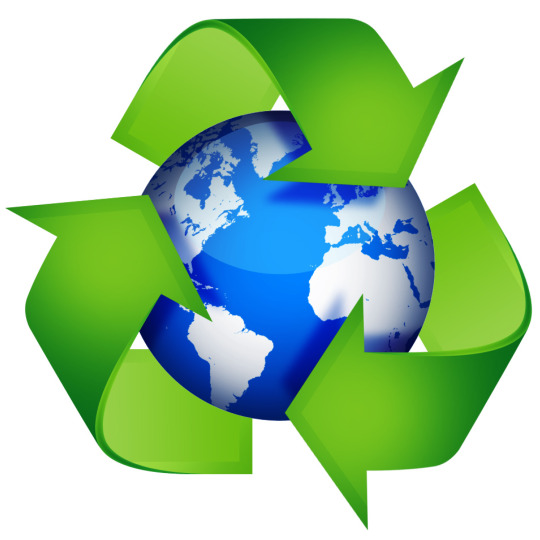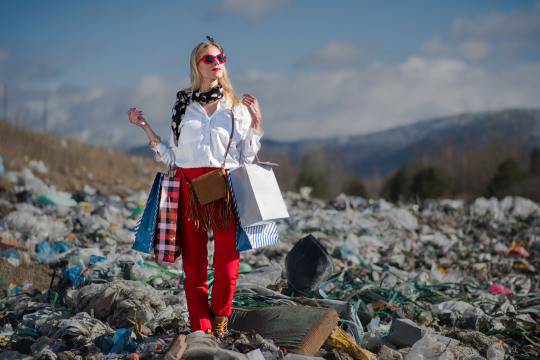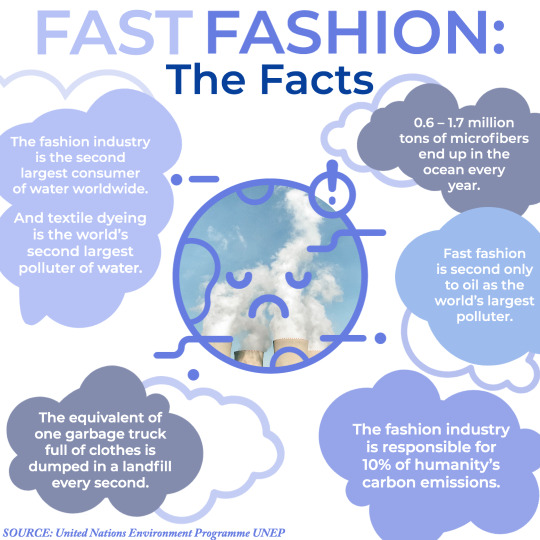Don't wanna be here? Send us removal request.
Text
The Concept of Sustainability
When we break down this term 'sustainability' it means the ability to maintaining essential processes that support sustenance of civilization on the planet. It essentially means utilizing resources in a way that enough are available for future generations to come and at the same time causing no harm to the planet.

Here steps in another concept that is essential to address: Sustainable Development.
Sustainable development has been defined in many ways, but the most frequently quoted definition is from Our Common Future, also known as the Brundtland Report:
"Sustainable development is development that meets the needs of the present without compromising the ability of future generations to meet their own needs."
The Sustainable Development Goals were adopted by the United Nations in 2015 as a call-to-action for people worldwide to address five critical areas of importance by 2030: people, planet, prosperity, peace, and partnership. The Sustainable Development Goals (SDG) are a collection of 17 global goals aimed at improving the planet and the quality of human life around the world by the year 2030.

The glimpse of these goals is as follows:
Goal 1: No Poverty: End poverty in all its forms everywhere.
Goal 2: Zero Hunger: End hunger, achieve food security and improved nutrition and promote sustainable agriculture.
Goal 3: Good Health and Well-being: Ensure healthy lives and promote well-being for all at all ages.
Goal 4: Quality Education: Ensure inclusive and equitable quality education and promote lifelong learning opportunities for all.
Goal 5: Gender Equality: Achieve gender equality and empower all women and girls.
Goal 6: Clean Water and Sanitation: Ensure availability and sustainable management of water and sanitation for all.
Goal 7: Affordable and Clean Energy: Ensure access to affordable, reliable, sustainable and modern energy for all.
Goal 8: Decent Work and Economic Growth: Promote sustained, inclusive and sustainable economic growth, full and productive employment and decent work for all.
Goal 9: Industry, Innovation, and Infrastructure: Build resilient infrastructure, promote inclusive and sustainable industrialization, and foster innovation.
Goal 10: Reduced Inequality: Reduce inequality within and among countries.
Goal 11: Sustainable Cities and Communities: Make cities and human settlements inclusive, safe, resilient, and sustainable.
Goal 12: Responsible Consumption and Production: Ensure sustainable consumption and production patterns.
Goal 13: Climate Action: Take urgent action to combat climate change and its impacts.
Goal 14: Life Below Water: Conserve and sustainably use the oceans, seas, and marine resources for sustainable development.
Goal 15: Life on Land: Protect, restore, and promote sustainable use of terrestrial ecosystems, sustainably manage forests, combat desertification, and halt and reverse land degradation and halt biodiversity loss.
Goal 16: Peace, Justice, and Strong Institutions: Promote peaceful and inclusive societies for sustainable development, provide access to justice for all and build effective, accountable, and inclusive institutions at all levels.
Goal 17: Partnerships to Achieve the Goal: Strengthen the means of implementation and revitalize the global partnership for sustainable development.
These are not just goals but yardsticks against which each country can measure its progress. And not only countries but as individuals we should always try to contribute to the progress: save on electricity while home by unplugging appliances when not in use; go online and opt in for paperless statements instead of having bills mailed to the house; reducing food and water wastage; sharing knowledge with others and spreading awareness; being a conscious consumer and a responsible citizen; and report bullying online when seen in a chat room or on social media.
Thank You
References:
Sustainable Development | International Institute for Sustainable Development (iisd.org)
Sustainable Development Goals | National Geographic Society
Five Easy Ways to Help Achieve the Sustainable Development Goals… (movingworlds.org)
0 notes
Text
youtube
10 Sep 2015| VIDEO: sustainable development agenda
The following video is an attempt to measure some progress of sustainable development goals.
youtube
0 notes
Text
Making unwanted things, loved again
Upcycling in layman terms means making something new or, of value out of unwanted things. It is just like adding a new leash of life to something old that we stopped cherishing. Upcycling is the need of the hour in the present scenario because, for long we both as consumers and as creators of fashion, have mindlessly contributed negatively to the planet and climate action has become of utmost importance.
One such project was given to us in which we were to look for some clothes like old shirts, t-shirts, a pair of jeans, etc. and make some changes to it so that it comes out as something new. I had an old t-shirt and a dupatta (as shown in the following image) that were no longer in use, so I did some cutting and stitching in it.

In the beginning I had some incoherent ideas in my mind, and I was quite unsure of the outcome. But as my mentors said, "that don't be afraid of taking risk", I began by cutting out the embroidered borders of the dupatta and slashing it from the center to obtain two long horizontal pieces of it. Then I experimented by cutting a cold shoulder on one arm of the t-shirt and, by trimming the other arm of it.

Then taking the two horizontal pieces of the dupatta, I stitched its borders inside since they were faded and were looking out of the picture. After this I stitched these horizontal pieces of dupatta together and added gathers to them. Further I stitched this long frill dupatta on my t-shirt in a way that it passed at the top of one shoulder and went through the underarm from another side.

Then, on the arm where I made the cold shoulder, I attached one of the embroidered borders of the dupatta on its edge.


In this project, I simply tried to play with two such products in my closet that were no longer needed. It was a mere attempt of slash and stitch. But this activity made me more aware of how important slow fashion is, and how conscious we must be at the first place before purchasing anything. Our small actions when accumulate together make a big impact on the environment, be it positive or negative, and small self-initiative will definitely add up to save our planet.
Thank You
0 notes
Text
youtube
An example of Patagonia owing it up to whatever they are doing.
0 notes
Text
Ethics In Fashion
The word 'Ethics' if connected to the concept of being morally right or wrong. It has to do with the feelings, that defines what a person feels right or wrong. It further governs the standard of behavior that is acceptable in the society.
Ethics is based on well-founded standards of right and wrong that prescribe what humans ought to do, usually in terms of rights, obligations, benefits to society, fairness, or specific virtues. “The general definition of ethical fashion is fashion that aims to reduce the negative impact on people, animals, and the planet. Producing an item of clothing involves design, labour, and materials. Ethical fashion is kind to the planet and people every step of the way, from seed to garment.”
MY ANALYSIS
In my analysis of what should be involved in ethical fashion, should be the commitment of the producers of fashion, towards making fair and transparent disclosures in respect of materials they claim to use, fairness in respect of treatment towards craftsmen and artisans, no green washing in respect of their sustainable claims.

Workers should be given fair wages; they should have defined work hours with overtime benefits, there should be safe and hygienic working conditions.
Designers should give the products they are promising in terms of quality, including disclosure of exact fabric blend, and charge fair prices for the product.
Ethics should also be maintained in terms of using authentic fabrics that are eco-friendly, using chemical free dying methods that do not damage the environment.
Disclosing what happens to waste fabric post-production, and whether proper waste-water treatment method is used post dying or not.
Being taught this in a design school just from the beginning is a really applaudable initiative, because I feel one should owe up to what their responsibility is towards society and environment. This will inculcate the feeling of being transparent and fair in the upcoming designers from the root level.
THANK YOU
REFERENCES
What is Ethics? - Markkula Center for Applied Ethics (scu.edu)
What Is Ethical Fashion? The Ultimate Guide | Ethical Made Easy
0 notes
Text
The Other Face of Fast Fashion
Hi dear reader, let's take a look into our cupboards and find those clothes that we bought because a similar looking garment was worn by our favourite celebrity or was maybe worn by a model on the ramp of Versace. I'm sure we all have such garments in our cupboard that we wore only once, or maybe not even once and never touched them ever, and we still have nothing to wear when we have an approaching party or a night out because everything seems outdated.
This is the bait we have all fallen for and now we are entrapped in the mentality of fast fashion.

Fast fashion in layman terms mean, producing inexpensive, trendy, unsustainable clothing in mass volumes. It includes a series of chain retailers that look into runway collection and make designing, production and marketing insanely quick and visually trap customers into a "see now buy now" environment.
People today want to look in line with trends, they want to look fashion forward, and this is exactly the mentality, these giant fast fashion retailers such as Zara and H&M feed on. They make products cheap and available in bulk in comparison to actual branded products, by compromising on quality and harming garment workers, environment, animals and planet.
youtube
They want to create feeling of luxury without paying higher price. The feeling of looking expensive.

Fashion industry has about 67 tons of carbon emission per second, which is higher in comparison to maritime and airline industry.
Such garments are made of synthetic fabrics that are non-biodegradable.
Even the donated clothes are sent to the third-world countries such as Indonesia, South Africa, Philippines, and many more. There these clothes end up burning since most of last year's clothes is already filling up landfills.
Some Solutions
We can contribute our bit here as well by simply wearing the clothes we have a little longer.
We can innovate with our garments by styling them with different accessories and other clothes.
We all have cousins and friend whose wardrobe seem exciting to us, so let's just swap accessories or clothes with them.
Next time while going shopping, we can be a little mindful and 'reflect before purchase', this can avoid over-buying and ultimately over-spending.
Why just buy in the first place if we're never gonna wear something and our hard-earned money is gonna end up in landfill.
We can apply the practice of 3R's of Reduce, Reuse and Recycle on our old garments and give a new life to the discarded product and use it again.
REFERENCES
3 notes
·
View notes
Text
Visit to a Textile Exhibit- KNMA
Hi dear reader, on 31st August'22, my batch was taken to visit a Textile Exhibit at The Kiran Nadar Museum of Art, Saket, New Delhi. The exhibition was titled as 'The Rite of Passage' and show-cased the work of designer Rimzim Dadu.
Rimzim is known as a 'progressive texturist' and is known for her experimentation with varied materials. The design philosophy behind the brand lends an alternative perspective to the use of traditional materials by the way of unorthodox yet intuitive hand craft techniques and vice versa. She has developed her signature techniques such as:
3D APPLIQUE
STEEL WIRE
CORDS

Her work left me absolutely stunned. Her experiment with the steel, silicon, and other materials, left me amazed at immense possibilities of fashion. What drew my attention the most was how steel was made malleable enough, to draw thin wires out of it, and making a metallic saree and other garments with it. This was made so comfortable enough for a person to wear it and carry it as a usual garment.


The best part of the exhibition was the wall depicting her failed triumphs. We got a chance to meet Rimzim and she explained that her failed experiments are alike a part of her journey as are her successes. She worked hard, meticulously, continuously experimenting and improvising, to build her widely recognized and appreciated brand. I got to learn a lot about her traits as a dedicated, hard-working and never giving up designer.
In the museum, we also saw the works of artists Somnath Hore and Anupam Sud. Their work depicted their emotions and what they experienced in their lives. There work from their student days was also presented there.


THANK YOU
REFERENCES
1 note
·
View note
Text
Voicing for a Sustainable Planet
We, the human race, the most superior creation of God, have created everything that perfectly suits our comfort. We have scaled to greater heights of progress and created everything that was once a mere imagination, isn't it?
But this is not true for someone like me or my peers born in 21st century. We have been passed on a selfishly exhausted and harassed planet by our previous generations, we've been given sewers in the name of rivers, heaps of litter in the name of playgrounds, grey sky's and 'lessons on sustainability'.

The above image is not new to many of us. But by the way "the beautiful Taj".
Hence, young people are now organizing themselves into mass movements demanding a habitable planet not just for themselves but also for the coming generations.
The video below depicts two major initiatives around the world that have not only questioned sustainability of the planet but also have urged political leaders to think of that future we're heading towards.
youtube
MY REFLECTIVE ANALYSIS
The idea of Green New Deal has done a massive task by encouraging politicians to sign pledges and refuse money from fossil fuel companies. While Extinction Rebellion has its own unique way of putting across the message of sustainability and driving attention by organizing Civil-Disobedience and non-violent actions.
We have reached the point of now or never, the clock is ticking fast. There is still much to be done in direction of abolition of fossil fuels, switching completely on renewable forms of energy, initiating change at mass level by introducing political reforms.
Take a tour of the above link and do your bit. I couldn't believe that some of the above tips I was already following, and the rest are also so easy. So why don't we all just apply these to our lives.
So dear reader, let's engage, just drop a comment below and mention what steps you are following from the above list. Also share some other tips that you follow as a step towards sustainability, that we also, if possible inculcate into our lifestyles.
THANK YOU
0 notes
Text
About Myself and My Cultural Identity
Hi dear reader, I'm Tanvi Gupta, and today in this section of my blog, I would like to introduce you to my cultural identity. Starting with myself, I am a student pursuing PG Program in Fashion Design and Technology. Delving into my cultural identity, I'm born and bought up in a culturally rich joint family in New Delhi. The best take-off to explain my culture would be from festivals that we celebrate. All prominent festivals are celebrated in my family including Lohri, Holi, Navratris, Raksha Bandhan, Dussehra and Diwali to name a few. Special festival delicacies, such as 'Makki di Roti' and 'Sarson da Saag' on Lohri, 'Sabu dana Khichdi' on Navratri fasting days, are cooked to celebrate each festival. Other fun parts of festival celebration include vibrant festive attires, and, decorating home with rangolis and torans, especially during Diwali.

Here's a video that will give a brief about my culture.
Coming to the attire, the daily cultural attire for ladies in my culture includes salwar-suit or kurtis with leggings or pants. While for gents it is usually shirt and pant. Present day wedding attire for ladies include lehengas, sarees and gowns, while for gents, it includes tuxedos and waistcoats. Being a North Indian, wheat and pulses form our staple food. There are some quintessential foods that are prepared each season. For instance, phirni(a dessert prepared using rice), chaach & lassi, and many more during summers. While for winters, Gajar ka halwa, gur ki gajjak with mungphali, besan milk with dry fruits, find a special place on our kitchen shelves.
Some other aspects of my culture include boys touching feet of the elderly to seek their blessing, Kumkum used in temples and at homes for worshipping, singing bhajans and aartis songs on festival days, form an indispensable part of my culture. I am really proud of my culture and traditions and really appreciate being a part of it. Moreover, I feel really blessed to be born in a culturally rich family and to be rooted to my traditions. Dear reader, let's engage ourselves in an activity that will allow us to reflect and appreciate our culture. Comment about what part of your culture you connect with the most, it may be the way you celebrate your festivals, or maybe some foods that you enjoy the most, or the way you attire for your festivals, anything.
THANK YOU
2 notes
·
View notes

